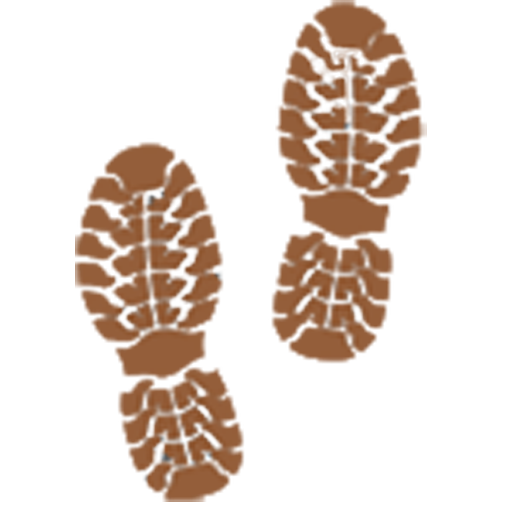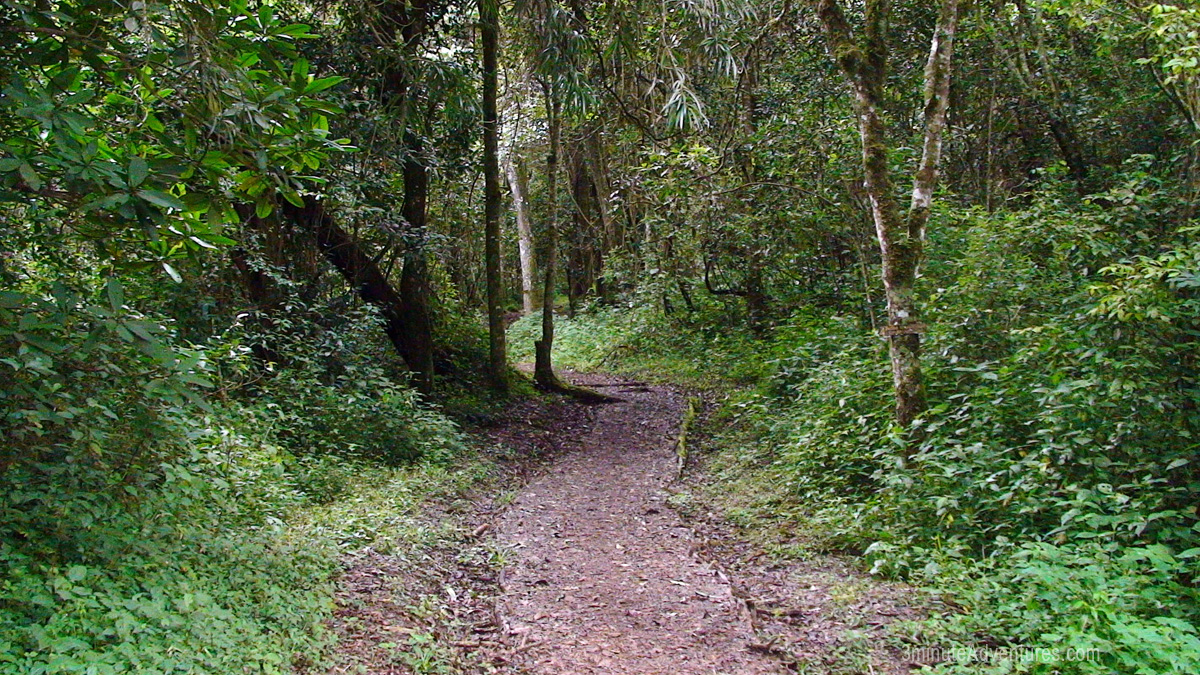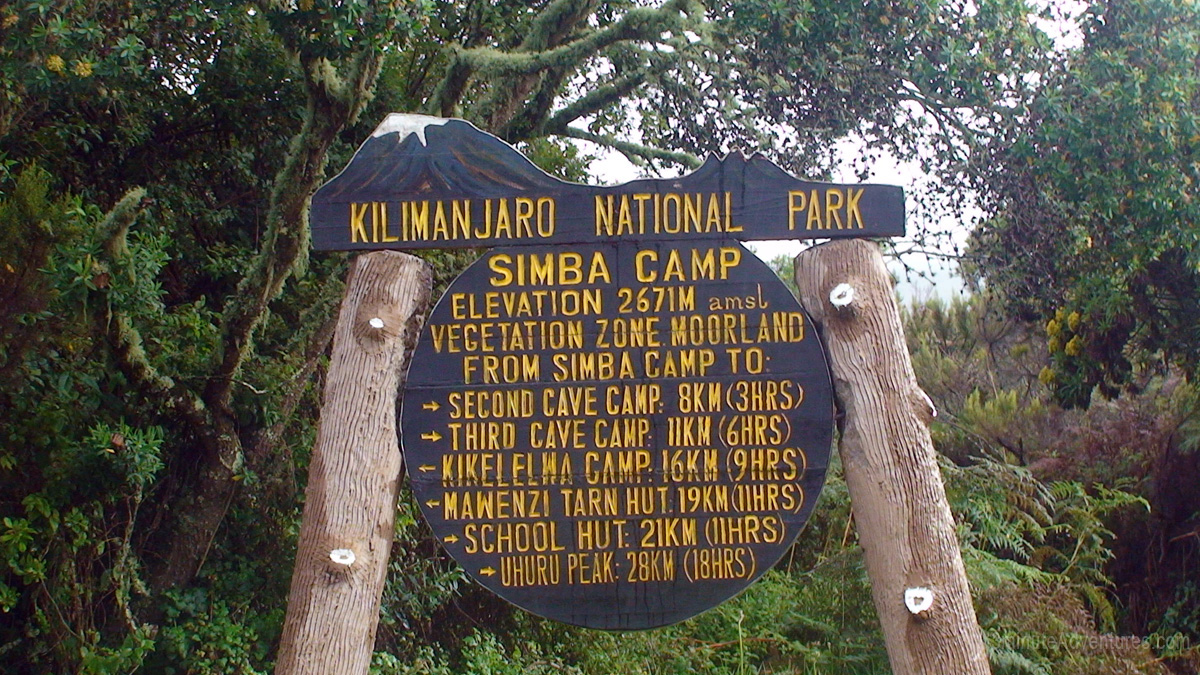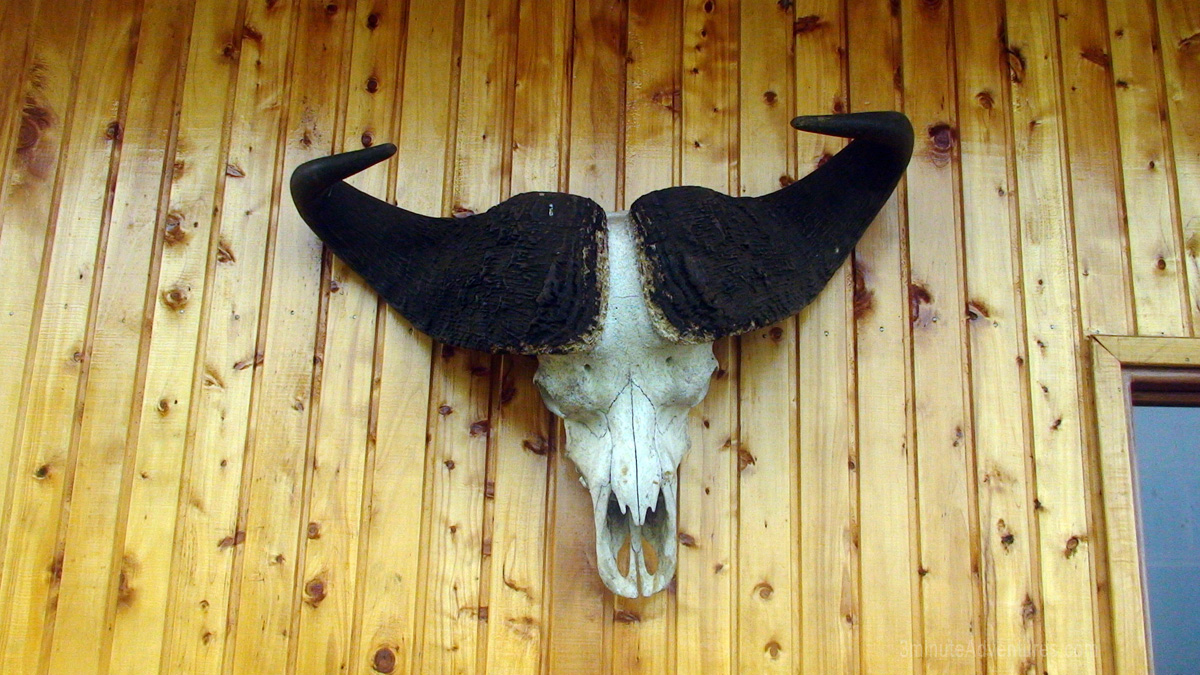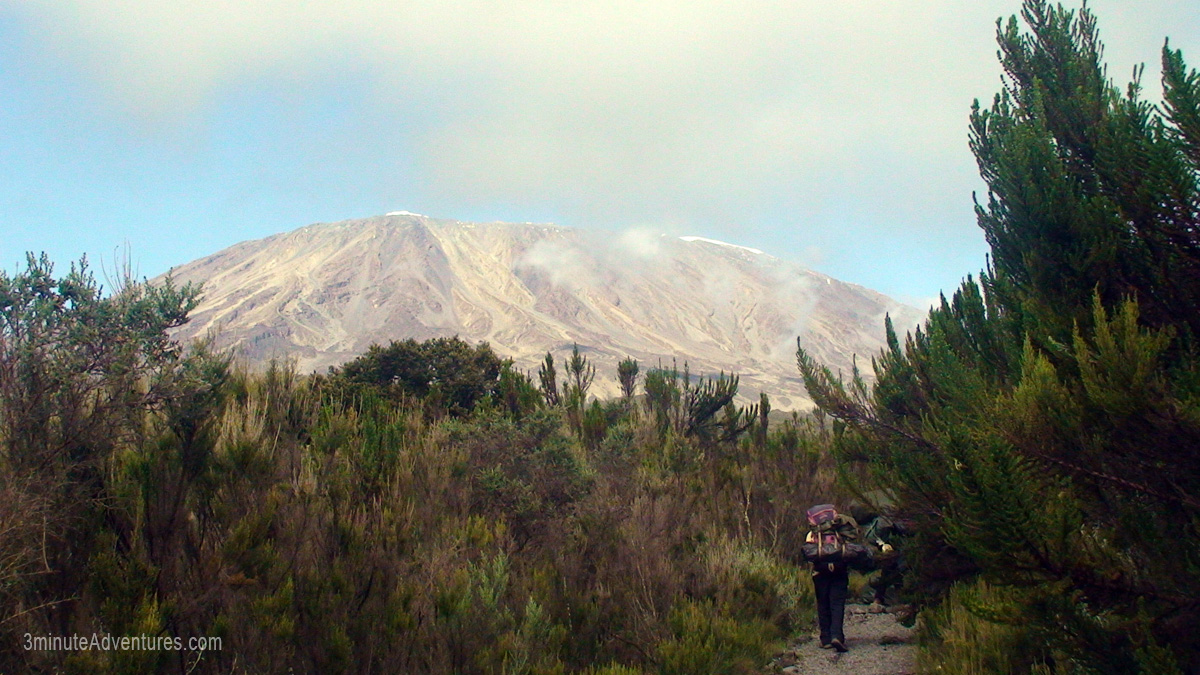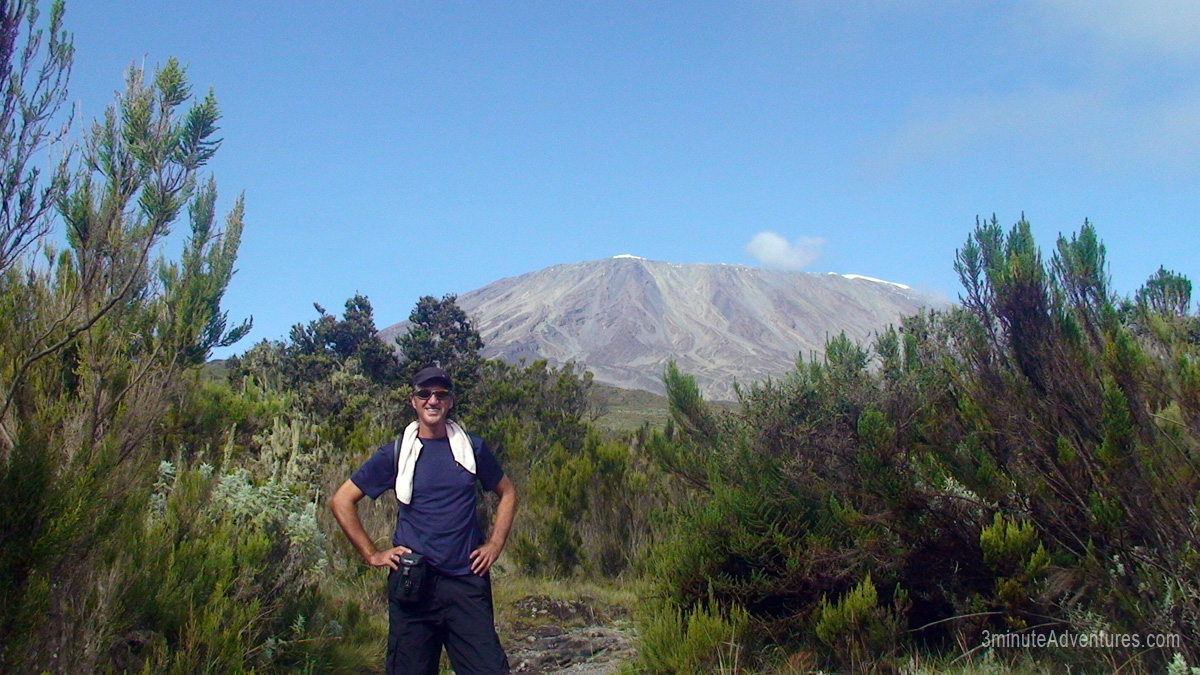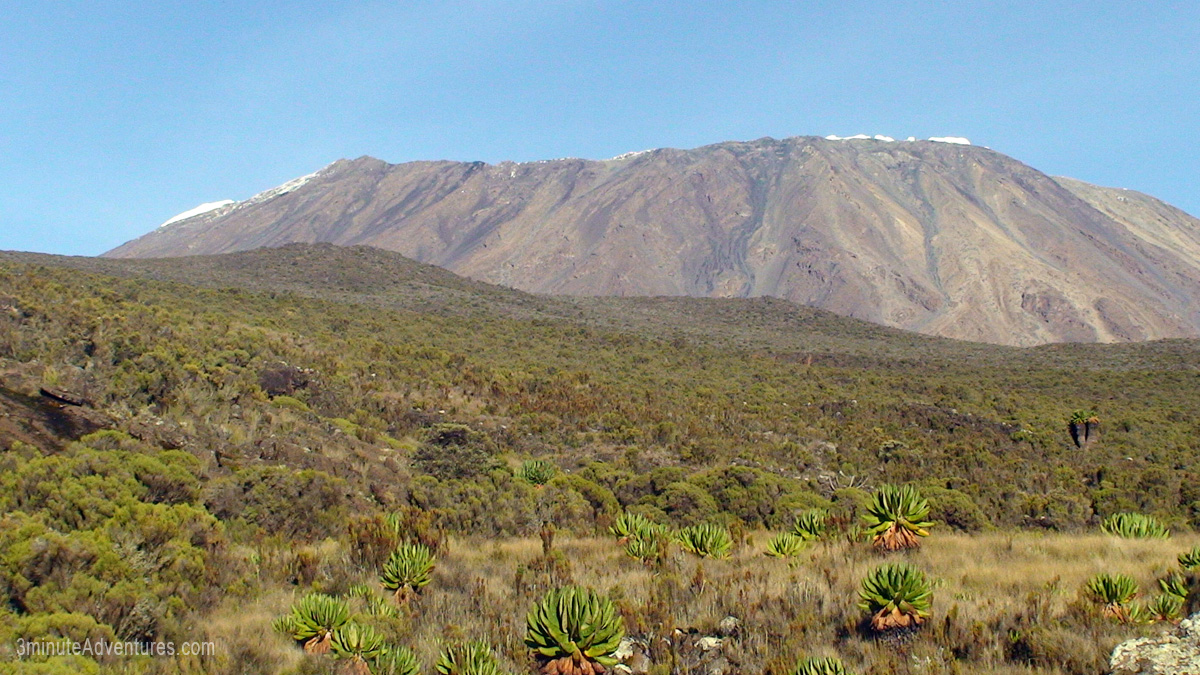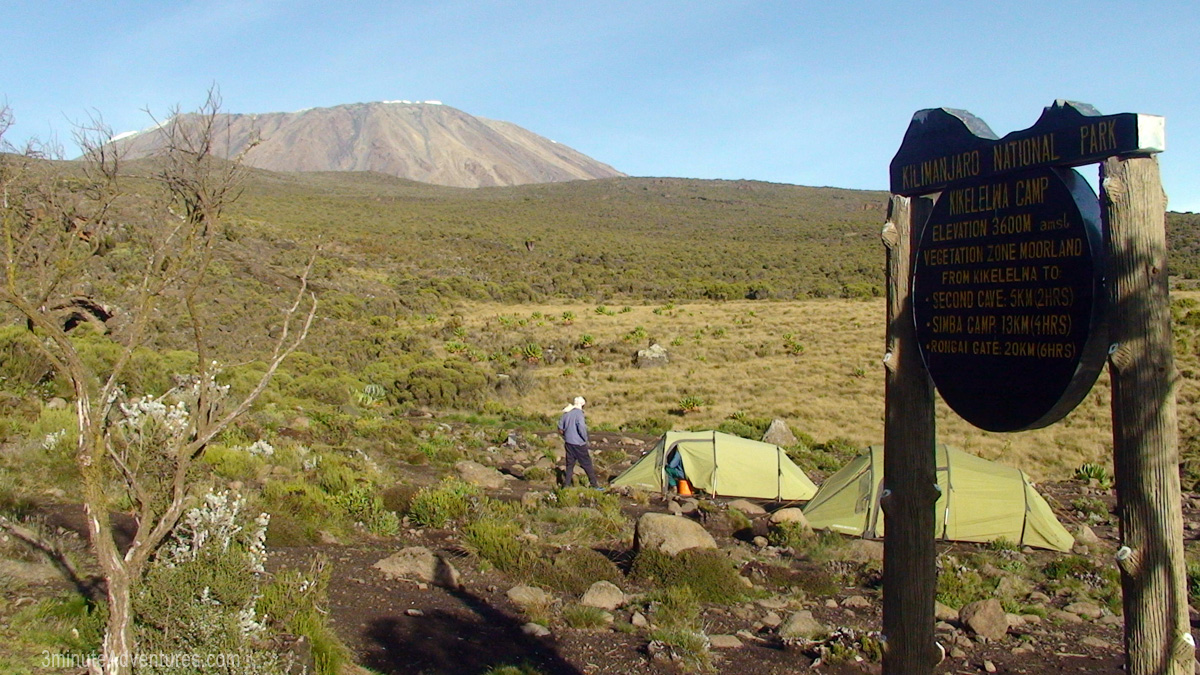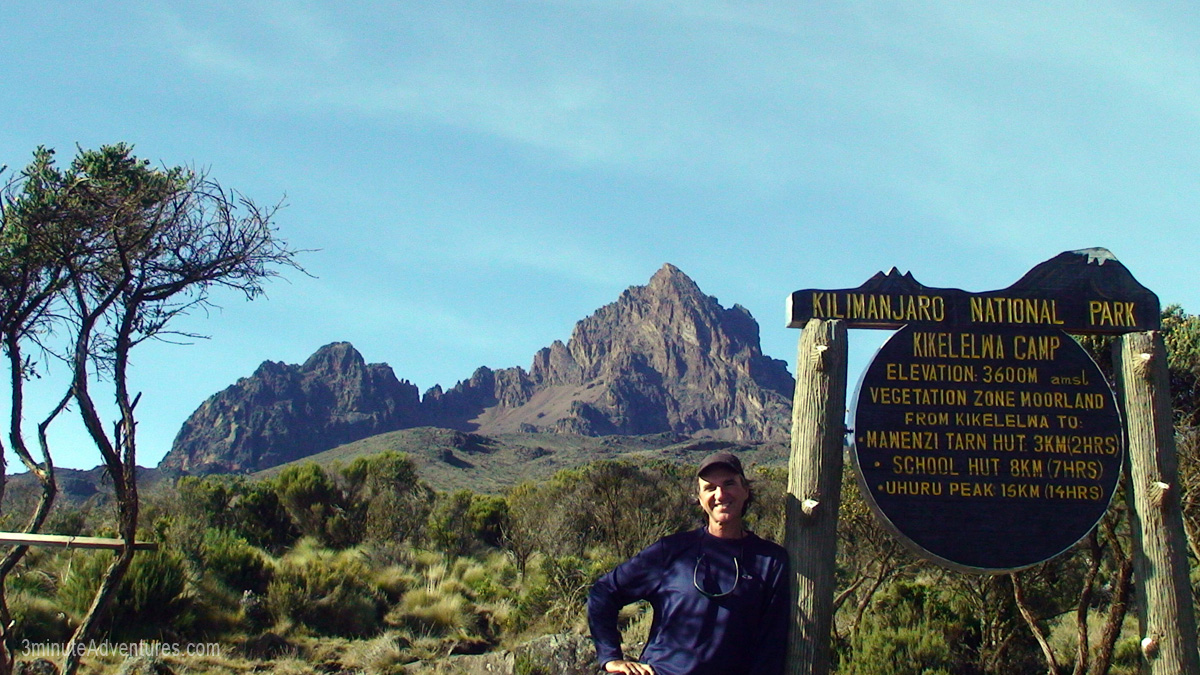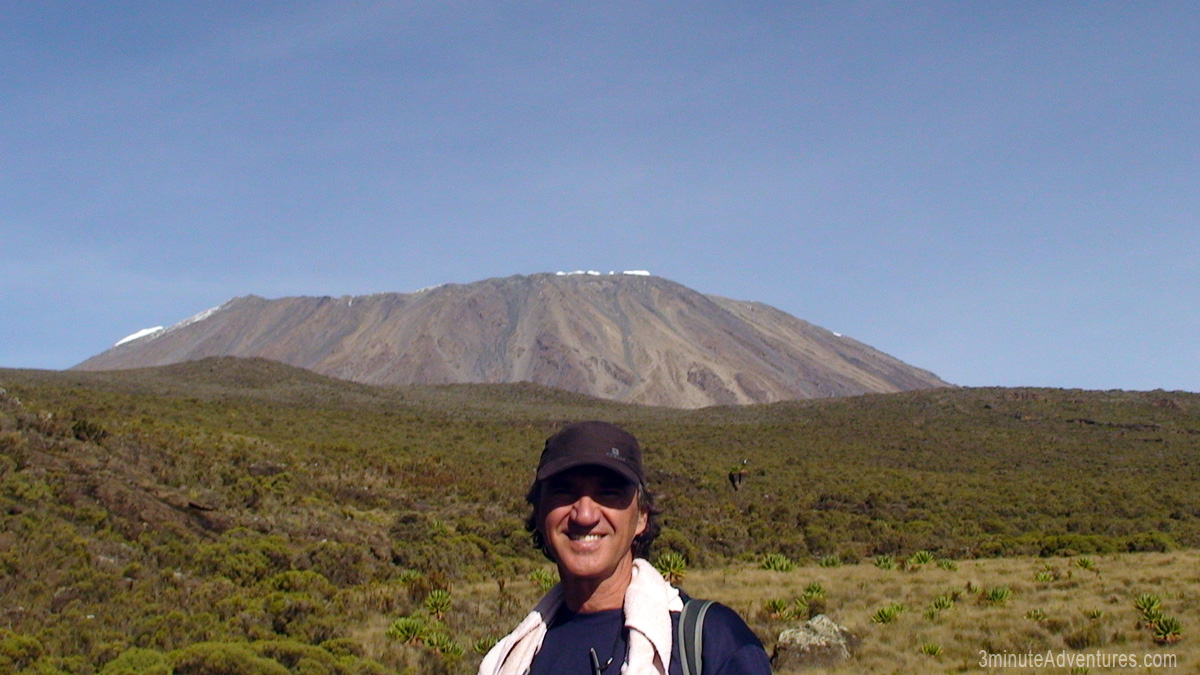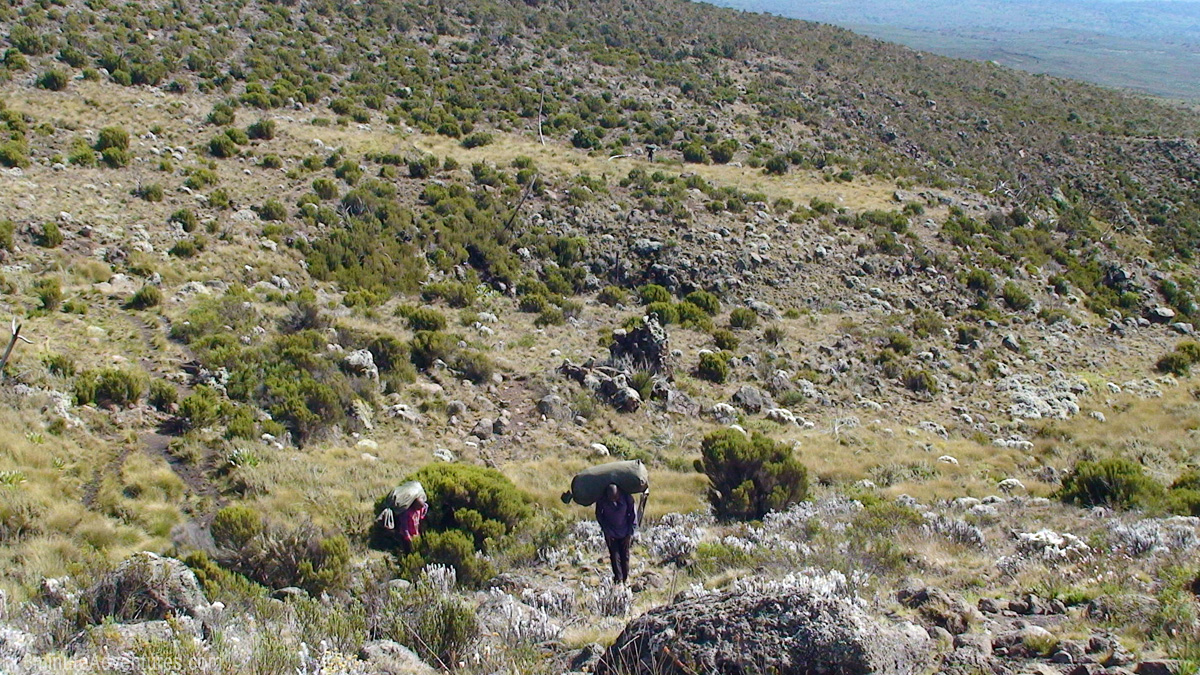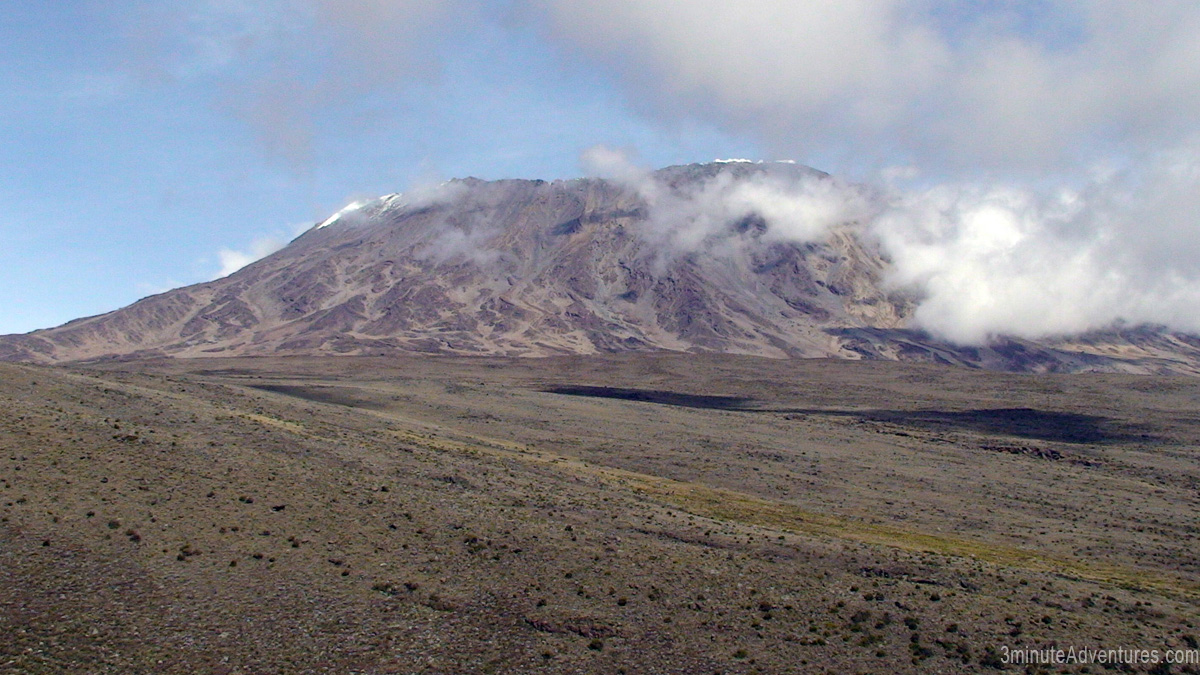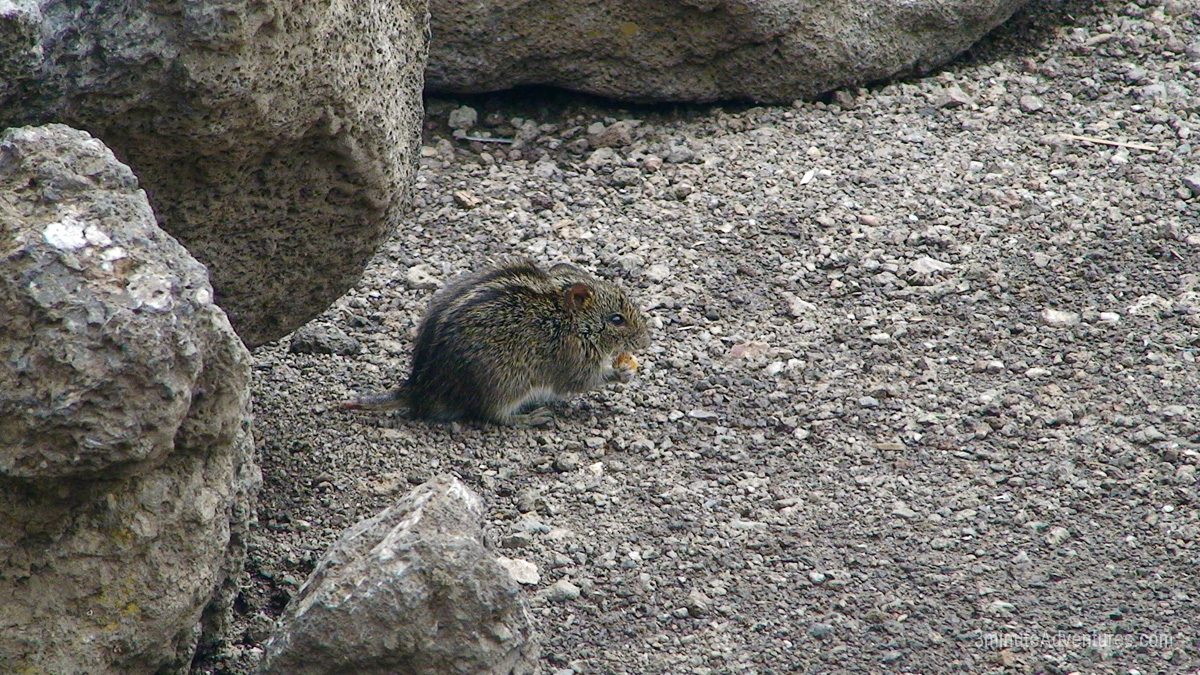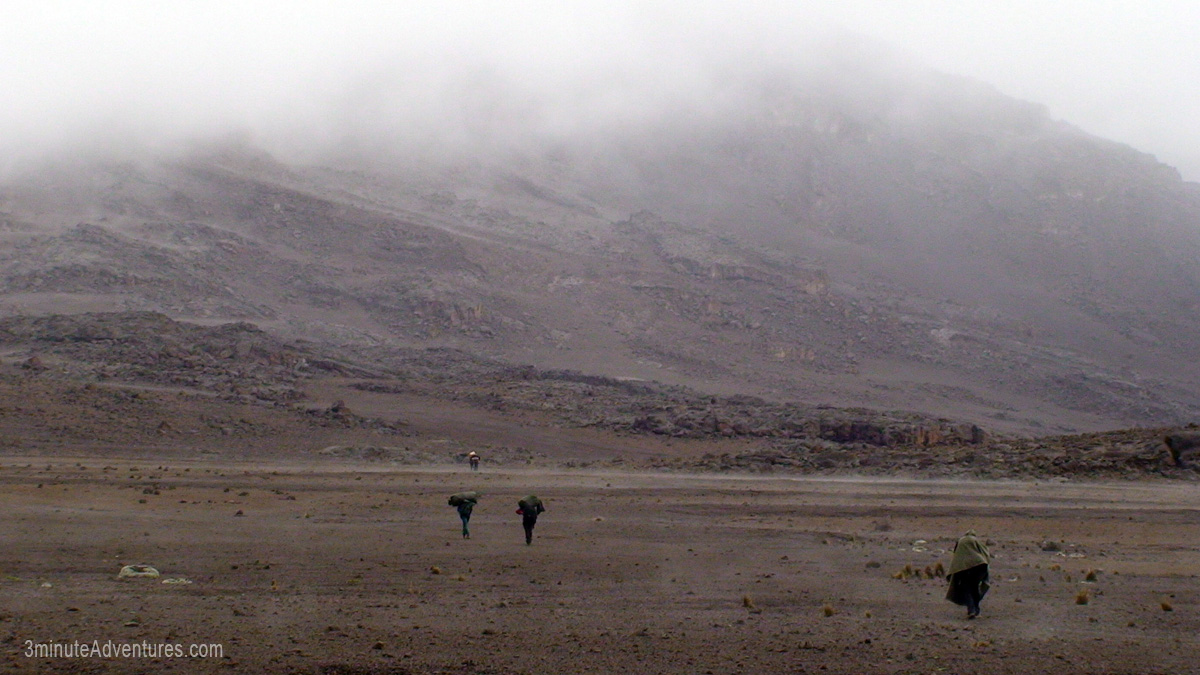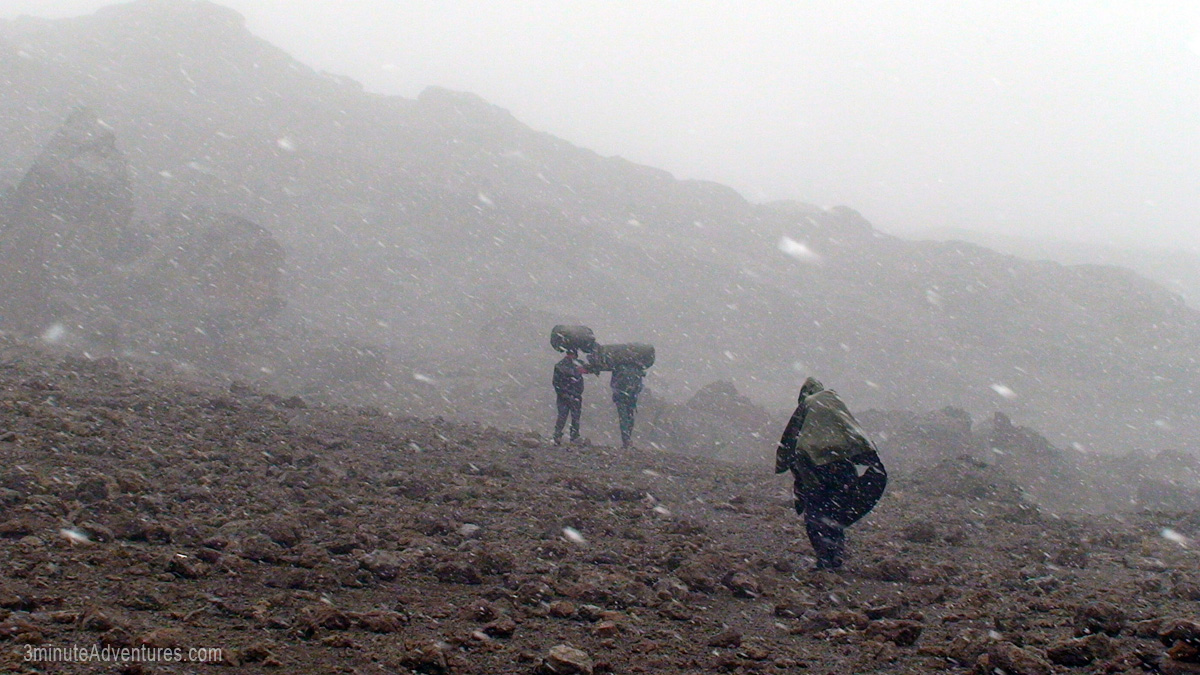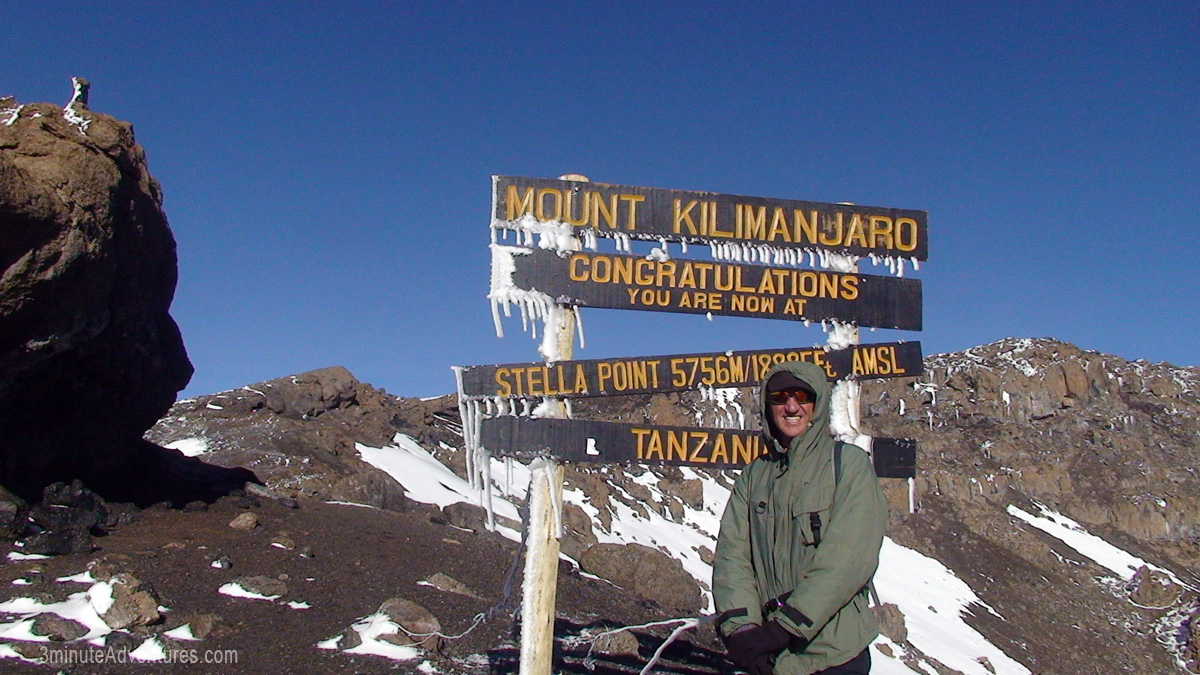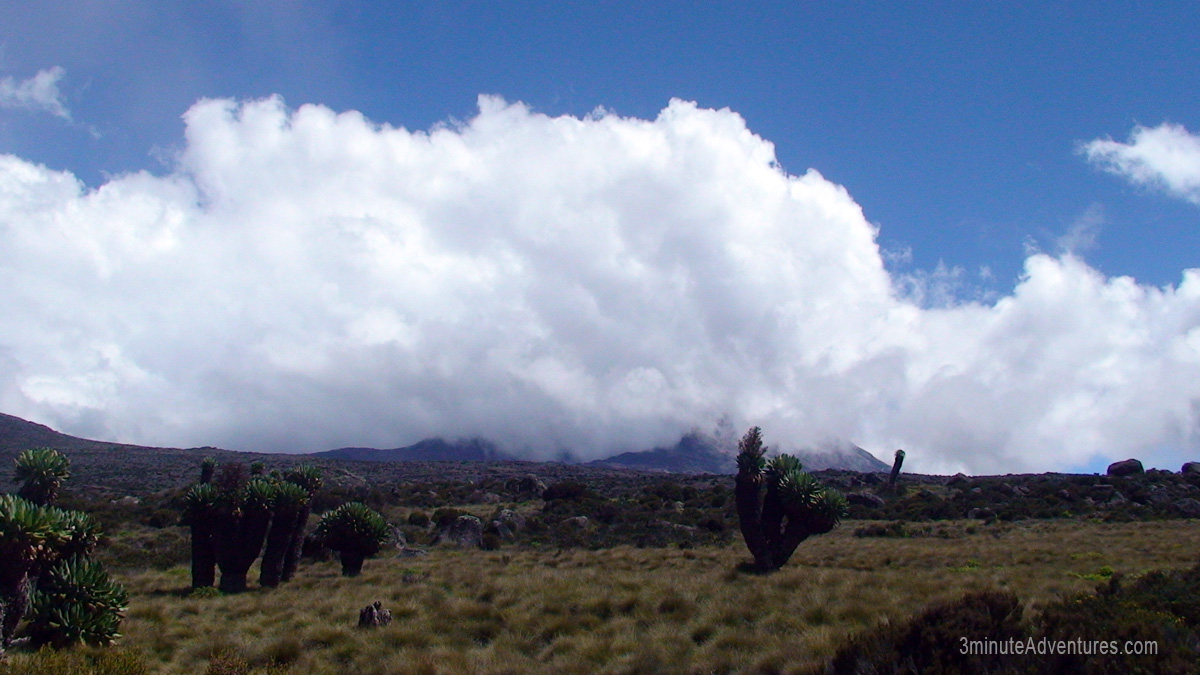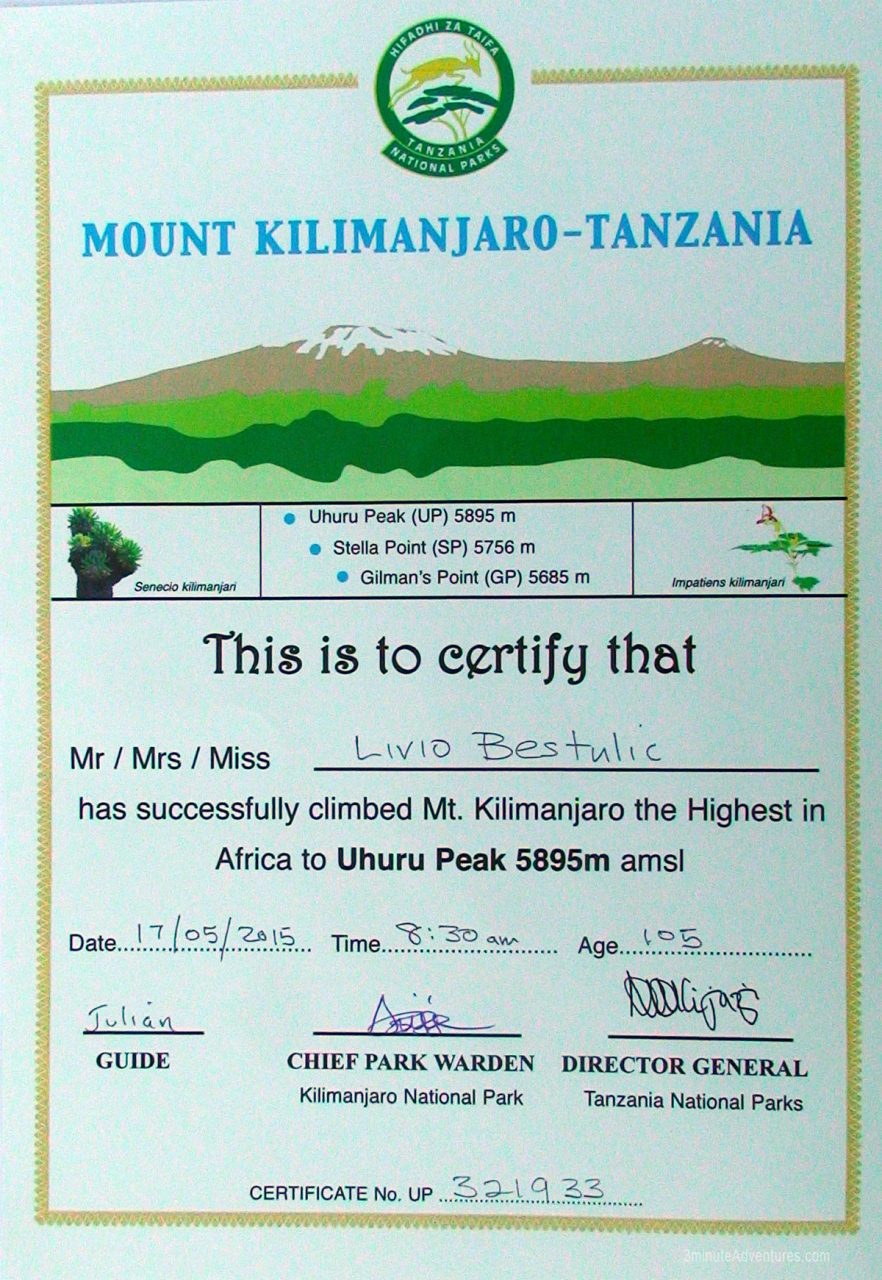This is a quick post about how to summit Kilimanjaro in the wet season. I provide the basics and videos. This is a self-guided adventure on a shoestring. Follow the links to dig deeper into the adventure.
I organized this trip via the Internet and a lot of footwork in Arusha. My goal was to hire as close to the starting point so that most of the funds went to the locals on the ground and not international tour operators.  All my efforts were of little value. In the end the payment ($1,800) was handled by a UK Internet site and the local contact was a questionable agent (verified by the local government tourist office). And at the end of this money chain were my 5 Masai porters and a guide. They were actually making around $10 a pay it turns out. At the end of the trip I tipped them $200 and they were very happy.
All my efforts were of little value. In the end the payment ($1,800) was handled by a UK Internet site and the local contact was a questionable agent (verified by the local government tourist office). And at the end of this money chain were my 5 Masai porters and a guide. They were actually making around $10 a pay it turns out. At the end of the trip I tipped them $200 and they were very happy.
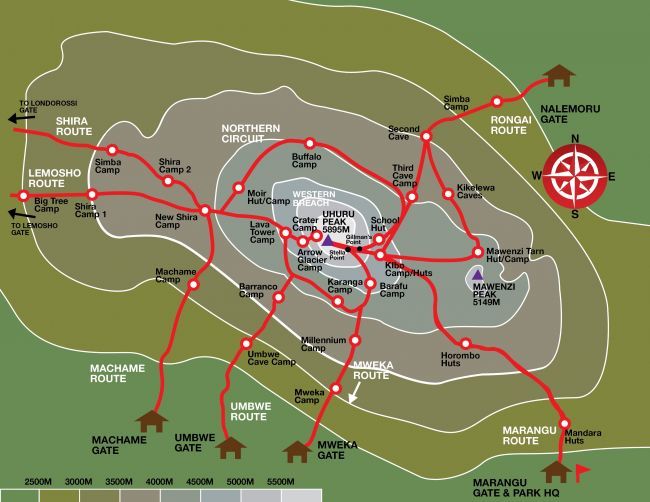 What I learned was that I could have managed the project better by coming to the Marangu Gate Headquarters with cash in my pocket, my own gear/food and some time to work things out. Outside the gate/park there is a small village and locals line the road offering their services. I watched as a westerner haggled his way to a single guide/porter (guides are officially required). He then paid the same fees as I did then they set off. That arrangement is not for everyone but it certainly cuts out all the slick operators. Live and learn.
What I learned was that I could have managed the project better by coming to the Marangu Gate Headquarters with cash in my pocket, my own gear/food and some time to work things out. Outside the gate/park there is a small village and locals line the road offering their services. I watched as a westerner haggled his way to a single guide/porter (guides are officially required). He then paid the same fees as I did then they set off. That arrangement is not for everyone but it certainly cuts out all the slick operators. Live and learn.
Click to watch Video Part1
Summit Kilimanjaro in the Wet Season Details
Day 1
After paying the fees ($700) at the park Kinapa headquarters we drive to the opposite side of the mountain to start the actual trek. We jumped out of the van and organized our stuff next to a cultivated field at the Nalemoru Gate. We were going to follow the indirect Fongai Route.
The early part of the trek lead through forest and very soon it was raining hard. Within a few hours we reached the Simba Camp. Rather than set up the tents in the rain, the ranger let us sleep in his building.
Day 2
The next morning started foggy and overcast. Three hours of easy walking and we had reached the Second Cave camp for lunch. An additional 4 hours later we reached the sunny Kikelelwa camp for the night.
Day 3
After a lazy three-hour hike we reached the Tarn Hut camp. The hut was a tin shack and we resorted to our tents once again. This was a lazy exploring and acclimation day.
Day 4
Five wet hours of walking and we reached the School Hut camp area. Wet in this case had turned from rain to snow. The tents were setup quickly and after a meal it was time for sleep. The goal was to get up at midnight and start a long night ascent.
Day 5
A little after midnight my guide and I set off for the summit. The porters would break camp and meet us on the other side of the mountain along our line of descent.
By 8am (rather than the planned 7am) we reached the volcanic cone. This was the end of the difficult steep ascent but not the end of the trek. We would still need to circle the crest to reach the actual summit (Uhuru Peak at 5,895m.
Descent
The descent was a screaming downhill slog reminiscent of all volcano descents (half speed and half out of control).
At Barafu Huts we met up with the porters and discuses our options. My fees included an additional night in the park or I could opt to call it over and return to Arusha a content trekker. I decided to make a break for the camp closest to the park exit and then decide.
Upon reaching Millennium Camp my guide told me that my park fee included emergency evacuation and if my knee was bothering me he could ask the ranger to call for a ride out (via an unseen service road). I agreed enthusiastically since my toes were actually killing me. The 8 hours of downhill from the summit had turned my toenails black and each step was a pain.
Click to watch Video Part 2
An hour later an old ambulance showed up and drove me and the guide to the Mweka Gate where our porters and ride back to civilization were already waiting for us. Sweet!
